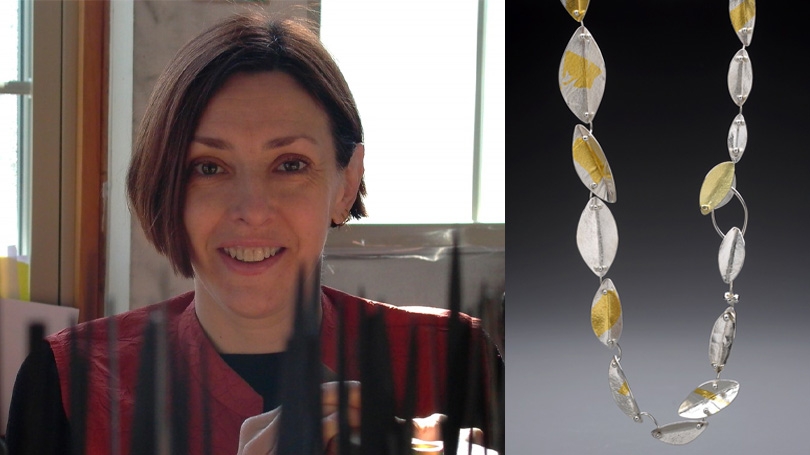A Conversation with Visiting Artist Paulette Werger
Paulette Werger, local metalsmith and maker, has an electric presence, even over Zoom. As the Jewelry Studio Fellow, I've met her a few times: a casual Coffee Hour, a wirework class series, her office hours, a one-on-one interview. Each time, without fail, Paulette greets me with enthusiasm, candidness and a genuine interest in not only sharing her own work but asking about mine. Here, I want to share just a handful of the things Paulette has said to me that make me feel incredibly lucky to have access to such a caring creator in our jewelry community here at Dartmouth.
On the relationship between maker, object and wearer
Especially with jewelry and flatware, the interaction between the human form and the functionality of the object is a test of my success as a designer or a maker. I feel like it closes the circle of the information that I'm thinking about if I can go from paper, where I'm drawing something, to actualizing a design, to actually seeing it on someone other than me—that's the contribution of the decorative art that I've been part of for many years.
I always look forward to bumping into people that I don't know who are wearing my jewelry, like somebody in a grocery store. I'll see somebody's hand flash and I'll recognize the opal and I'll be like, "Wow, that's an interesting ring!" And then I'll be like "wait a minute, I made that!" Half the time I won't remember the person but I'll remember the jewelry, which is really even weirder, because I have a relationship with the object. And oftentimes, because my work is sold not just by me or it's given as gifts, I don't actually meet the recipient, the person wearing it. I won't disclose the fact right away that it's me that made the object, and I'll say "Nice ring, where'd you get it?" They'll say "Oh, my husband gave it to me for our 25th anniversary present, blah blah blah," and I'll say "Well, I'm the maker," and they'll say "Oh my god, you can make jewelry?"
There's something about that relationship that is equally as important to me as the making of the object. It's sort of the end product. And also the fact that I'm working in materials that withstand the archeological record since they're metal. These objects will go beyond my lifetime and beyond the lifetime of the person who's wearing them—if I've crafted it correctly. If I've made it well. And yeah, it'll end up as trash somewhere, but it's trash that you can get carbon dating from.
On teaching and sharing ideas
[Teaching is] seeds that I get to plant, and they manifest themselves, they grow into these amazing stories inside of other people. I'm only one person with a finite set of ideas…and I have more ideas than I have years to live. So if I give the ideas away to other people, that ensures that what I'm sharing moves things forward in some kind of positive way.
I always have these great students, whether I'm teaching a workshop or I'm in a college environment, where I'll go, "Holy cats! Why didn't I think of that? I've been doing this for so long, but you just came up with a new way to spin it!" That never gets old for me. I love that part. That's my favorite part of teaching, to see what somebody does with that little kernel. I give them some weird random thing and they run with it and you're like "Holy smokes, I never would've thought of that. And good for you."
On whether she's ever bought a former students' work
All the time.
